If you’ve ever made a loaf of bread at home, you know the importance of lining your pan with parchment paper. Not only does it make for an easy release, but it also helps to prevent sticking and burning. The paper wants to bunch up and slide around, making it difficult to get a nice, even layer.
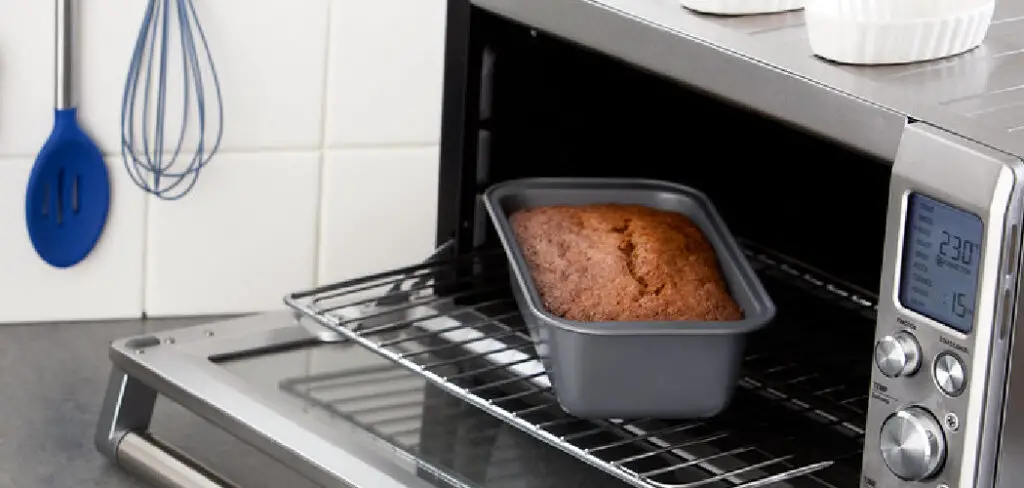
So in this blog post, we’re going to discuss the proper way on how to line loaf pan with parchment paper. We’ll also give you some advice on how to make it easier. So keep reading to learn the best way to line a loaf pan with parchment paper!
Why Should You Line Loaf Pans with Parchment Paper?
When making a loaf, it is important to make sure that the baking pan is lined with parchment paper. This is because parchment paper helps prevent the sticking and burning of the loaf, meaning you can easily remove it from the pan without any mess afterward. The parchment paper also ensures even heat distribution during baking which can result in a more consistent texture and flavor.
Furthermore, parchment paper helps prevent the loaf from picking up any flavors or odors from the pan. As an added benefit, lining your loaf pans with parchment paper can help reduce cleanup time as you don’t have to scrub off any burnt-on bits of food. So, it is worth taking a few minutes to line your loaf pan with parchment paper for a better-baked result!
10 Steps Guide on How to Line Loaf Pan With Parchment Paper
Step 1: Cut a Rectangle of Parchment Paper
Measure the length and width of the inside of your loaf pan. Next, cut a piece of parchment paper that is slightly larger than the measurements for the pan. Make sure that, the parchment paper is cut to a rectangular shape for the best fit. If your pan has a lip, cut the parchment paper 1-2 inches larger than that.
Step 2: Grease the Pan
Lightly grease the pan with butter, oil, or nonstick cooking spray. This helps to ensure that your cake won’t stick to the sides of the pan while baking. If your recipe calls for it, butter and flour the pan to help make the parchment paper stick.
Step 3: Put Parchment Paper in Greased Pan
Place the parchment paper inside of the greased pan so that the excess hangs over all four sides. Make sure it’s centered and flat on both lengthwise and widthwise. If your pan has handles, tuck the parchment paper underneath them to keep it in place. Smooth any wrinkles or creases so your final product will come out smooth and even.
Step 4: Grease Parchment Paper
Once the parchment paper is securely placed inside the pan, lightly grease the parchment paper with butter or vegetable oil. This will help prevent the dough or cake batter from sticking to the parchment and make removing them easier after baking. Greasing the parchment paper can also add flavor to whatever you’re baking, depending on what type of fat you use. Be sure to evenly grease all surfaces of the parchment paper that have come in contact with your dough or batter.
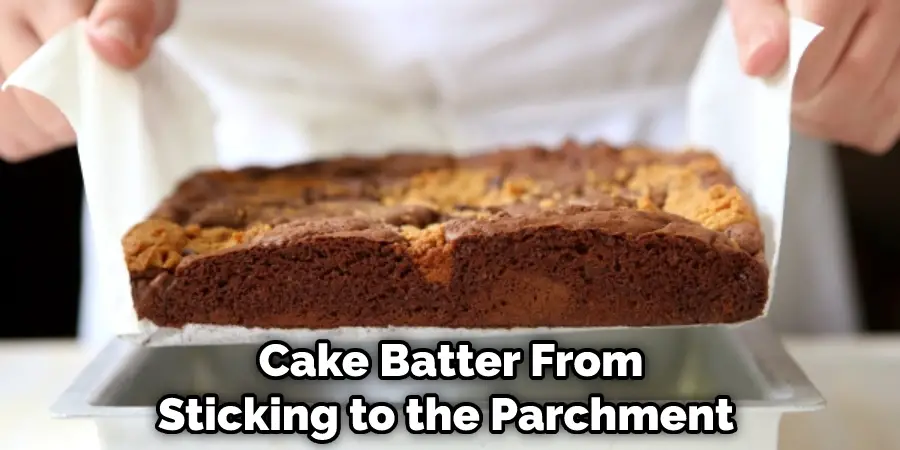
Step 5: Add Batter to Pan
Once the parchment paper has been greased, you can add your dough or cake batter to the pan. Fill it no more than 3/4 full of batter and ensure that the lining is still tucked securely against the sides of the pan so that it doesn’t become loose while baking. Ensure the batter covers the parchment paper completely to form a secure seal when cooked. Be sure not to overfill the pan, as this can cause your finished product to be uneven or overflow in your oven.
Step 6: Place Pan in Oven
Once the pan is filled with your mixture, please place it in the center of the preheated oven. Generally, most recipes call for baking between 350 and 375 degrees Fahrenheit. Check your recipe to see how long you should bake the loaf. Keep an eye on the bread as it bakes; if the top starts to get too brown before it is finished baking, lightly cover it with a piece of foil, then allow it to finish cooking.
Step 7: Remove Loaf From Pan
After the loaf has cooled, carefully invert it onto a wire cooling rack or plate. Gently peel away the parchment paper. You can use parchment paper to line a loaf pan for many recipes, including banana bread, zucchini bread, pumpkin bread, and more. This method prevents your quick bread from sticking to the sides of the pan while also providing a nice presentation when you serve the bread.
Step 8: Allow the Loaf to Cool for a Few Minutes
If your recipe calls for it, allow the loaf to cool for a few minutes before slicing. This will help keep all of the juices and flavor locked into your bread when you slice it. It can become crumbly or dry if you cut into it too soon. Also, make sure that the parchment paper is removed before slicing. If the parchment paper is left on, it will stick to the bread and not allow for a smooth cut.
Step 9: Gently Peel the Parchment Paper Away
Once the loaf has cooled for a few minutes, gently peel the parchment paper away. If there are any pieces of parchment still stuck to your loaf, you can carefully scrape them off with a knife or rubber spatula. Once all of the parchment paper is removed, you can slice and serve your freshly cooked bread. Also, make sure that the parchment paper is discarded properly.
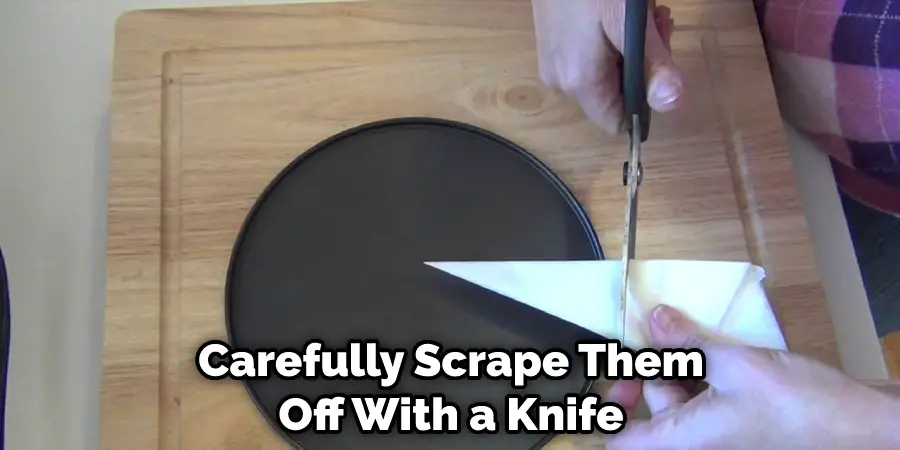
Step 10: Slice & Enjoy
Once the bread has cooled enough to handle, remove it from the pan and slice. If desired, you can rub some butter or olive oil on the slices, sprinkle with some salt and enjoy your freshly baked bread! You can also freeze the extra slices for later. Parchment paper makes it easy to store and reheat the already-sliced pieces of bread. With parchment paper lining, you can easily remove your loaf from the pan without crumbling.
By following these steps, you can successfully line a loaf pan with parchment paper and enjoy your freshly baked bread without worrying about it sticking to the sides of the pan.
Some Additional Tips When Lining Loaf Pan with Parchment Paper
- Make sure to use high-quality parchment paper. Not all brands are the same quality, and some may not be suitable for baking.
- To ensure that the parchment paper stays in place better, lightly grease the pan before lining it with parchment paper. This will help keep the parchment from slipping out of place during baking.
- Cut the parchment paper so that it fits into the bottom of the pan and comes up the sides just high enough to cover them. This will help trap in moisture and prevent your baked goods from drying out too quickly.
- For added insurance, use baking spray on top of the greasing step. The combination of grease and baking spray will help the parchment paper to adhere better.
- When you’re done with your parchment paper-lined loaf pan, dispose of it properly. Many parchment papers are recyclable, but you should check with local recycling guidelines to ensure yours is!
- If you don’t have parchment paper, you may be able to use aluminum foil instead. However, it is not recommended since the foil may react with your food and give off an unpleasant odor or taste.
- If you’re baking something in a loaf pan that requires high heat, such as a dark chocolate cake or pumpkin bread, make sure you use parchment paper that is suitable for high heat. Regular parchment paper may not be able to withstand higher temperatures.
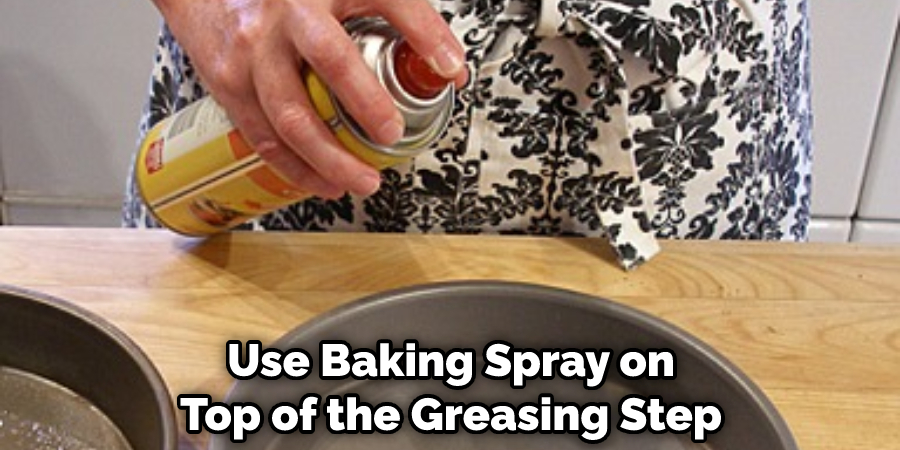
With these tips, you’ll surely get the best results when lining your loaf pan with parchment paper! Now you can bake confidently, knowing that your baked goods will come out perfectly every time.
Can You Line Banana Bread Pan With Parchment Paper?
Yes, you can line a banana bread pan with parchment paper. Parchment paper is excellent for baking as it prevents sticking and makes for easy cleanup. For best results, use pre-cut parchment paper liners that fit into the bottom of your pan before adding in the batter. If necessary, you may also cut parchment to fit the bottom of your loaf pan and the sides.
Be sure to spray the parchment paper with nonstick cooking spray before adding it to your batter to prevent further sticking. If you don’t have parchment paper, you could also use wax paper or aluminum foil; however, parchment paper is preferred for banana bread pans as it is heat resistant and won’t burn. When finished, the parchment paper can easily be removed from the pan with minimal effort and mess. Once cooled and removed, banana bread should slide right out of the pan.
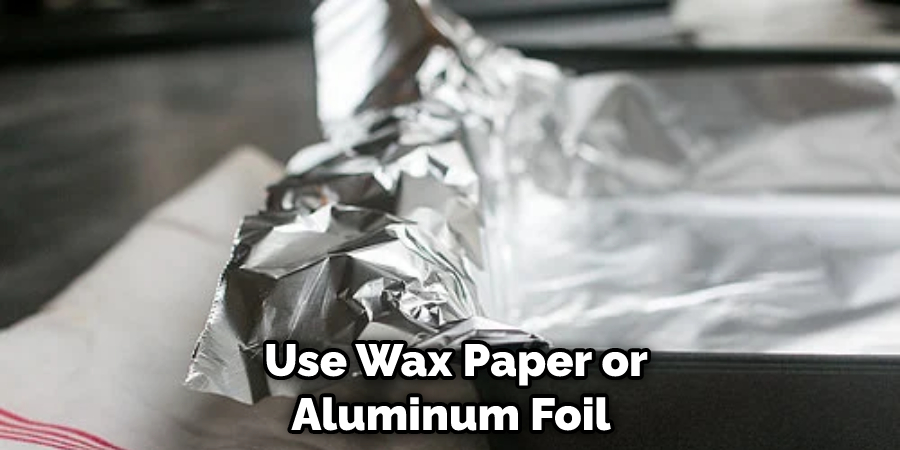
Final Words
Now you know how to line loaf pan with parchment paper like a pro! This simple skill will come in handy whenever you can bake a quick bread or pound cake. And because the parchment paper prevents sticking and makes cleanup a breeze, we think it’s worth taking the extra step to line your pan before baking.
Do you have any tips for making perfect quick bread or cakes? Share them with us in the comments below!
Professional Focus
Angela Ervin, a former interior designer turned blogger, specializes in kitchen design and renovations. Through her website, she blends her passion for cooking with design expertise, sharing practical and creative ideas. Known for balancing functionality and beauty, Angela’s insightful content has made her a trusted voice in home design and lifestyle.
About the Author
Angela Ervin, an experienced interior designer and blogger, combines her passion for kitchen renovations with storytelling. Living in Petersburg with her family, she enjoys cooking and testing her projects firsthand. Known for her humor and relatable style, Angela shares creative, functional design insights through her content, making her a trusted voice in home design.
Education History
University: Virginia Commonwealth University
Degree: Bachelor of Fine Arts (BFA) in Interior Design
- Angela’s education at VCU focused on mastering core interior design principles, including spatial planning, color theory, materials selection, and sustainable design practices.
- She gained hands-on experience through studio projects and collaborative design exercises, which honed her ability to create functional and aesthetically pleasing environments.
- Her coursework also emphasized problem-solving and practical applications of design, preparing her for real-world projects like her self-directed kitchen renovations.
- The program’s strong foundation in both technical skills and creative expression shaped Angela’s ability to seamlessly integrate form and function in her work.


